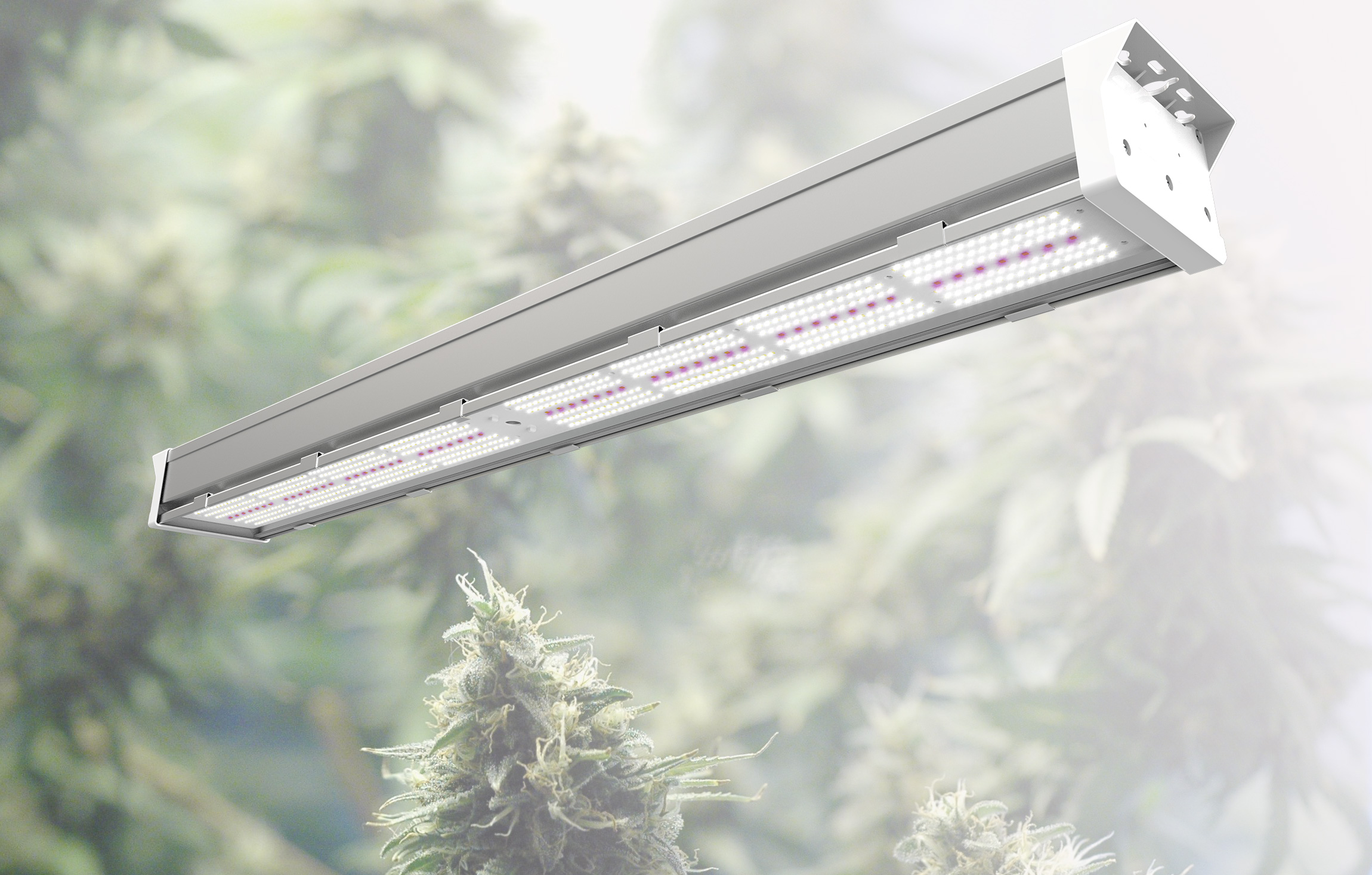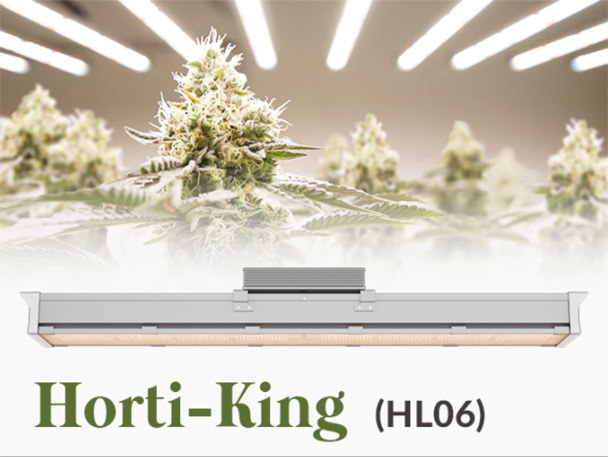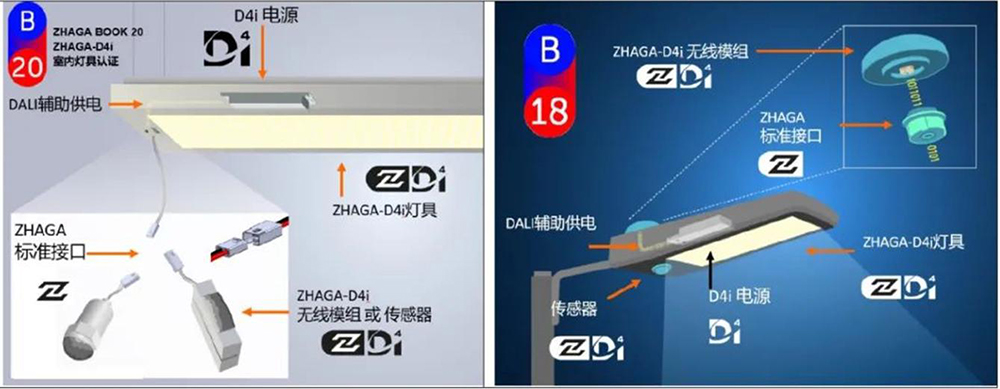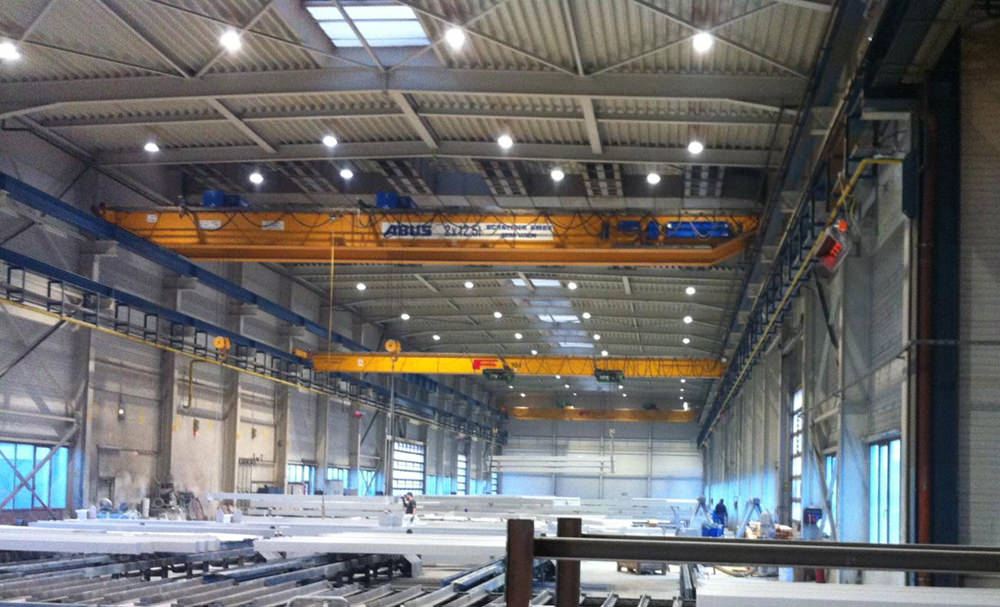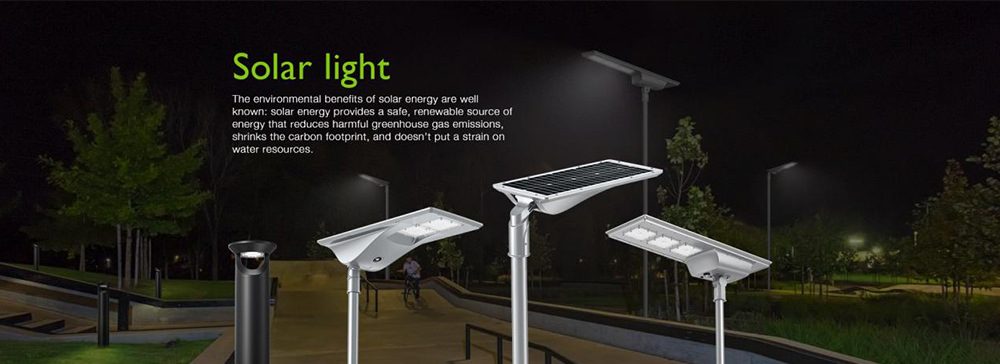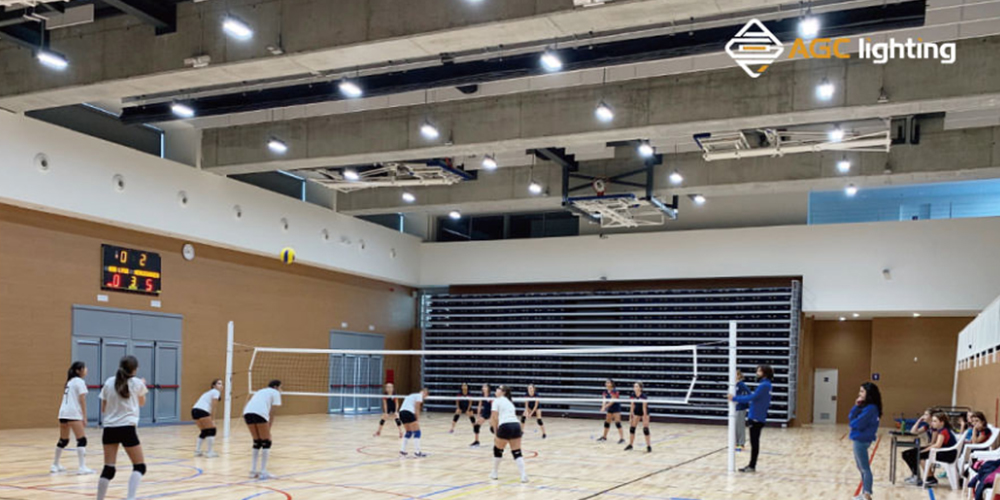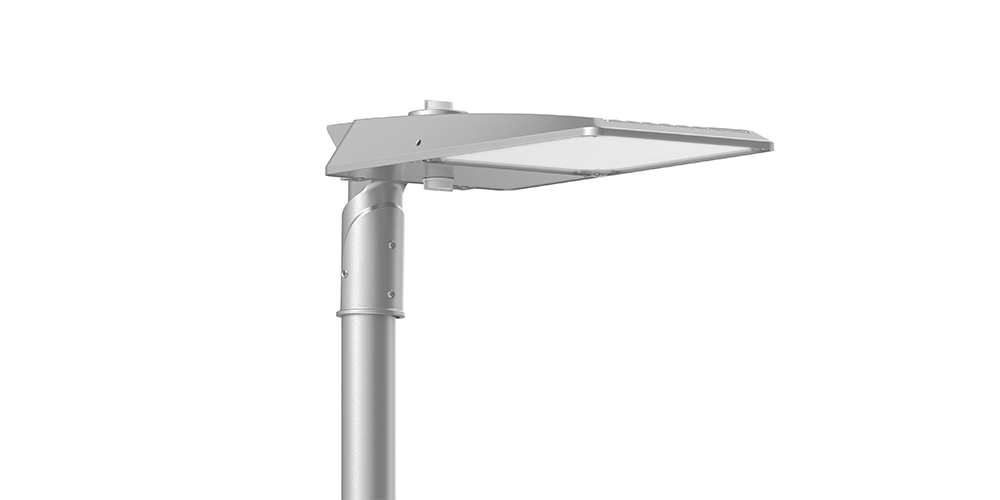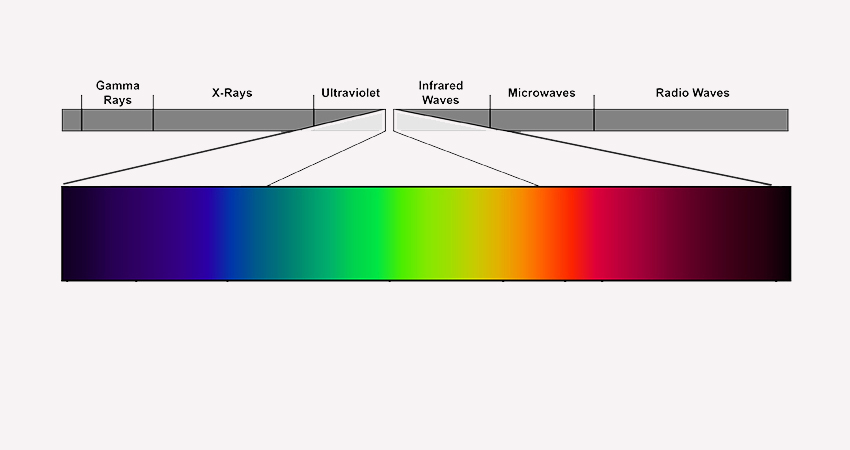
Infrared (780nm-1000nm)
Infrared produces heat effect, which provides heat for the growth and development of crops. Under the irradiation of infrared, the ripening of fruits tends to be uniform. Increasing this light can affect the growth speed of plants' stems. A short exposure to infrared increases the space between nodes. However too much infrared may actually damage plants. Because infrared is a kind of light that can emit a great deal of heat. Heat may discolor or kill plants, especially those plants haven't recently been watered. In addition, too much infrared also possibly cause plants other harmful influences such as experiencing too early growth that reduce their health, or encouraging them to flower too soon but plants themself don't accumulate plenty of living matter and nutrient. In the end, it is likely that plants don't grow as we have them to be.
Far-Red (700nm-780nm)
Far-red promotes extension growth including leaf expansion. Researchers found that leaves will be larger under the condition of containing far-red light than that lacking of far-red light. On one hand , they cultivate plants under sole-source lighting in indoor greenhouses or vertical farms where used lights can be control. On other hand they add some far-red light to previous lighting source as a control group. Through such a compared experiment they discovery the effect of far-red to plants. The result is adding far-red to the light spectrum can increase leaf size. This potentially increases irradiated area, enabling plants to capture more light and enhance growth. Therefore far-red can indirectly help to increase growth with time over. Far red also could speeds up the Phytochrome conversion which reduces the time a plant takes to go into a night-time state. This allows plants to produce a greater yield.
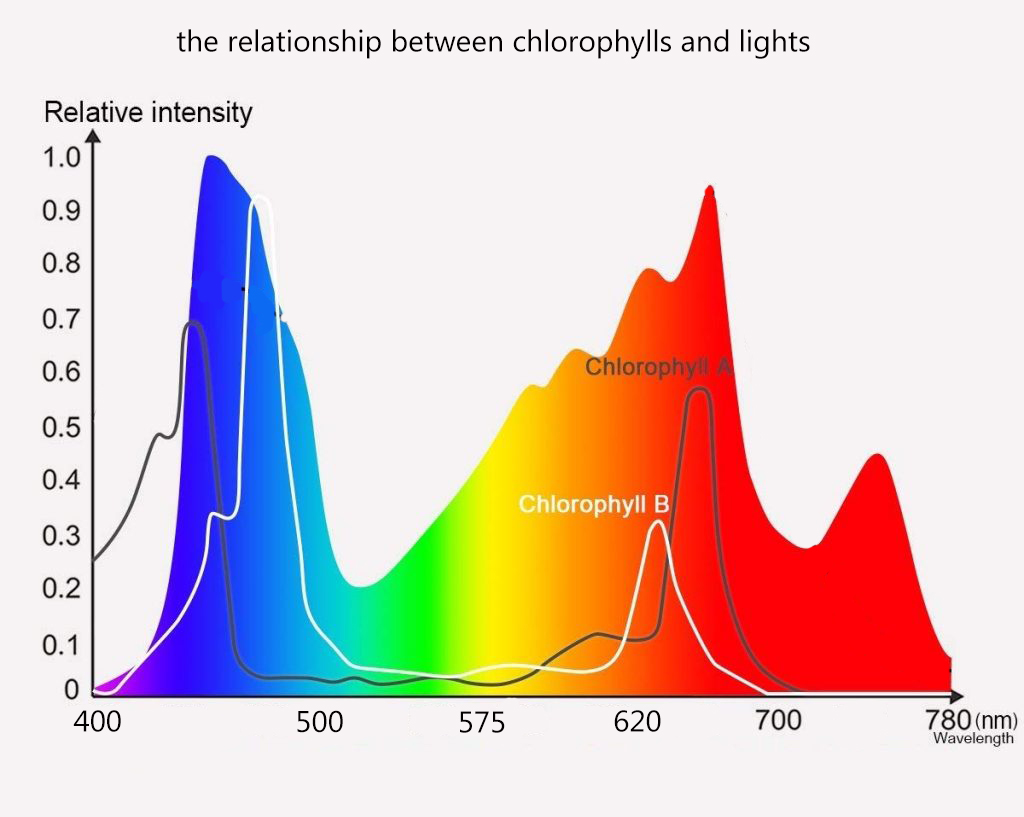
Red Light (620nm-700nm)
Red light is highly effective at regulating growth and development for plants. Red light helps to flower and fruit and prolong flowering. It can greatly enhance the photosynthesis of plants and promote the growth of plants.but if plants are grown under only red light. They will have a stretched and elongated appearance. The leaves are long and thin and plants become tall. Growing under only red light will be not a ideal choice if this growth characteristic isn't wanted. As for the ratio of blue light and red light it need to pay attention to. Extension growth of plants is inhibited if improper. Study shows growing with 80 to 90 percent red light and 10 to 20 percent blue light is a better choice for plants .
Yellow-Orange (575nm-620nm)
If only yellow light is used, the photosynthetic intensity of plants is greatly reduced, and the synthesized organic matter is not enough to meet their needs.This will weak the growth of plants. It is different for orange light. The plants can benefit from the part of orange light that near the red light. Orange light help the process of photosynthesis on the account of a portion of chlorophyll B has a affinity for this light .
Green (500nm-575nm)
There is misunderstanding about the effect of green light to plants for some time. That is plants don’t use green light for photosynthesis, they reflect it. However, it is only partly true. New research now reveals that green light can also drive plant growth. The green light have a strong penetrating power. Green light can penetrate deeper through a leaf to improve photosynthesis in chloroplasts located towards the bottom surface of the leaf and beyond. While penetrating green light increases photosynthesis by exciting chloroplasts located deep in the mesophyll. Since green light penetrates much more effectively to the lower canopy, green light will help drive photosynthesis across the whole plant as it is absorbed by leaves in the lower canopy not exposed to red or blue light. Adding small amount of the green light to light led grow light spectrum will be better than the spectrum that lacking of green light. It is good for maximizing the photosynthesis of the plants .
Blue-violet (400nm-500nm)
Blue light can promote the growth of green leaves. Blue light combined with red light helps encourage the flowering of plants. Blue light can increase the growth rate of plants. Violet have an effect on the color, taste and aroma of plants.
Ultraviolet Light (<400nm)
-
UV-A (315nm-400nm)
Ultraviolet light that reach the earth is mainly this scope of ultraviolet. We commonly call long ultraviolet. The long ultraviolet has the stimulation effect to the plant growth, may increase the crop yield, promotes the protein, sugar, acids organic compounds producing. If it is used to irradiate the seed, the germination ratio of seed may be enhanced. UV-A light can activate a plant’s natural defense mechanisms, and then induces plants to produce a sort of “sun screen” to protect itself from the damaging light. Some plants can produce as much as 15 different defense proteins with exposure to UV-A. As the amount of UV-A increases, so does the production of defense proteins. The presence of these proteins can enhance a plant’s smell, color, taste and resistance to disease. Seedlings ever exposed to ultraviolet light have better ability to adapt to high intensity light. When seedlings are transplanted from a low light intensity state to a high state. They go through a period of adjustment because of environment changing. If the seedlings have irradiated by ultraviolet A. This will greatly shorten the time to adapt to the new surroundings. It makes great sense to the recovery and rapid growth of plants .
-
UV-B (280nm-315nm)
Most of this ultraviolet (280nm-315nm)is absorbed by the ozone layer above the earth. The short ultraviolet has the inhibition effect to the plant growth and it can prevent the plant from growing in vain. Certainly if this characteristic of UV-B is what you want and you want to apply it to control the height of your indoor crops or you want to use it to make a further research, you can consider to add a small amount of UV-B to realize your goals. It is worth mentioning that this ultraviolet has the disinfection sterilization faction and can reduce the plant disease. Relatively it has great destructiveness on plants. The future is a huge unknown. If one day human beings look out someway to make the most of its disinfection sterilization faction, at the same time, wipe out its destructiveness on the plants. It will create opportunity for the pollution free vegetable development .
-
UV-C (100nm-280nm)
Almost all this scope of ultraviolet is absorbed by the ozone layer above the earth. It is highly disruptive for plants .
In this essay. All kinds of effects of different wavelength light on plants are listed. But we don't name the effect of all kinds of light on specific plants. Since for different plants even if the same light, it is possible to produce different effect to a great degree. These effects that have been found become the theoretical foundations what we use to study the optimal spectrums of plants interested. It is precisely based on these theoretical foundations, our Atop lighting, a LED grow light manufacturer and supplier has worked out the optimal spectrums for the cannabis planting by continually explore and practice.
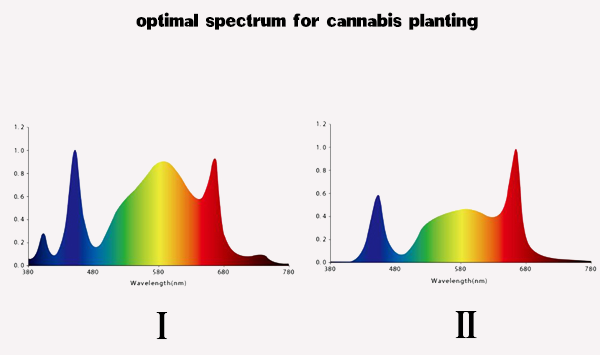
Horti-King LED grow light is gaining popularity these days by cannabis growers once launched. With optimal spectrums it can speed up the pace to come true the benefit maximization of growers.


